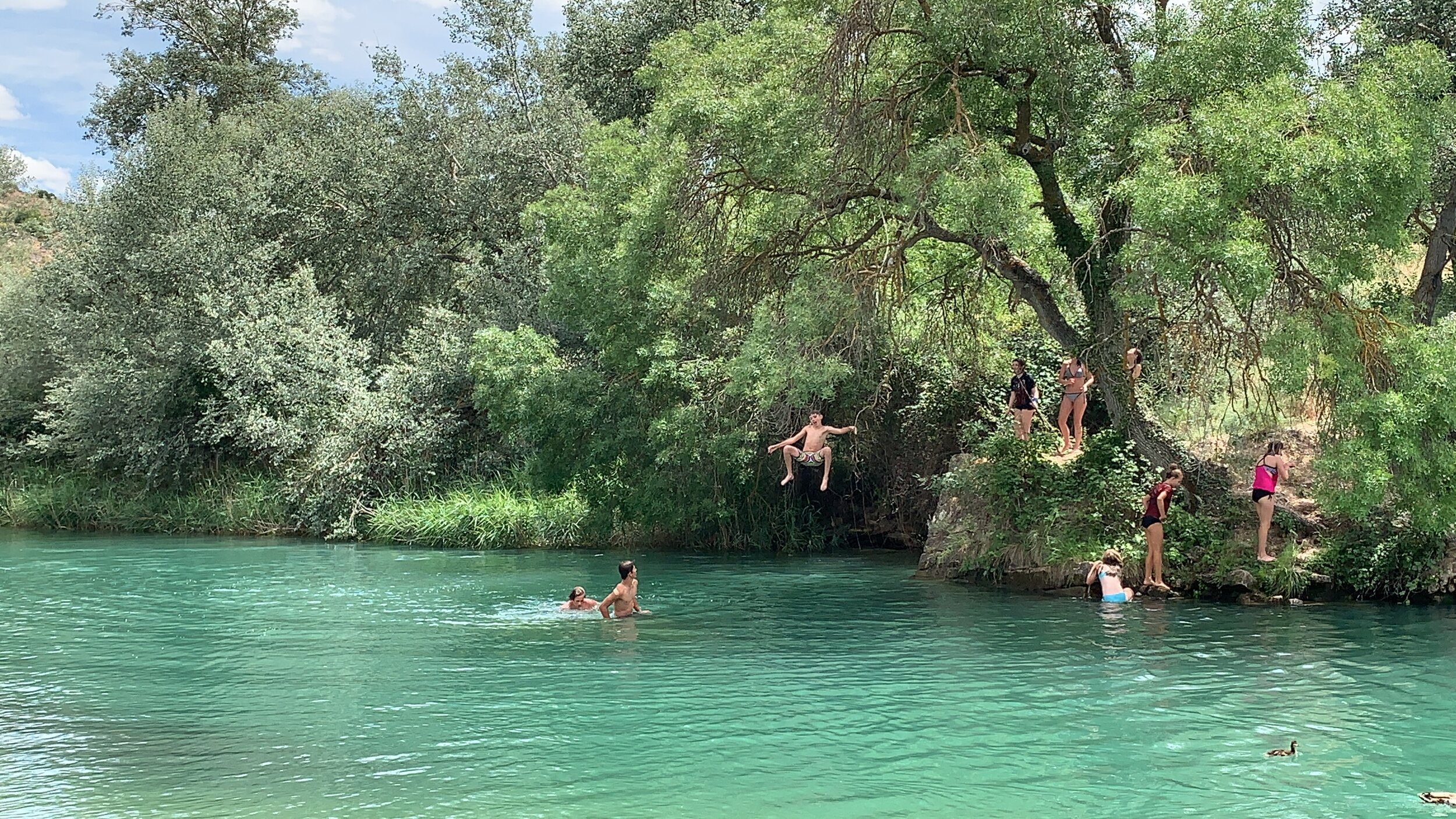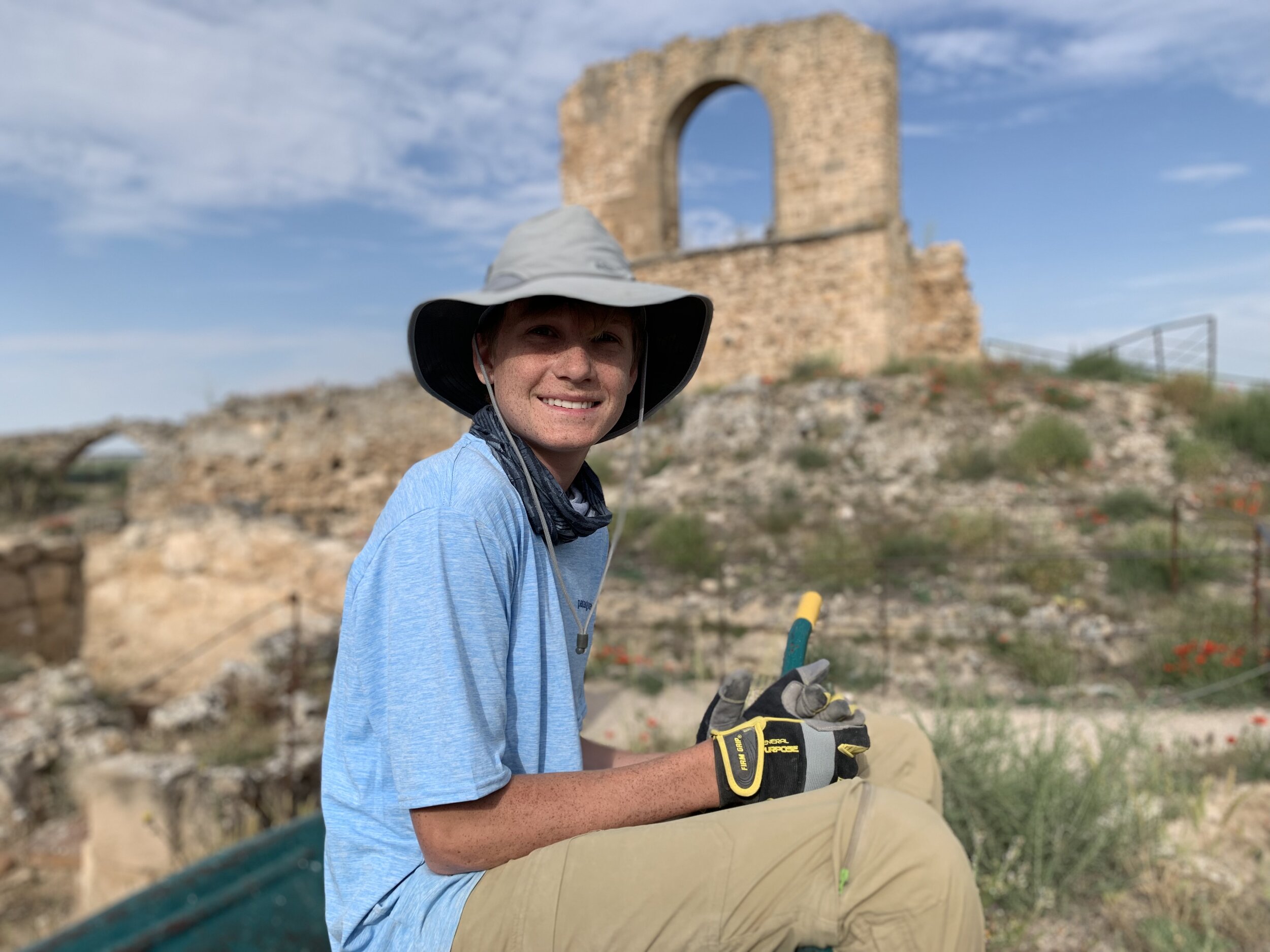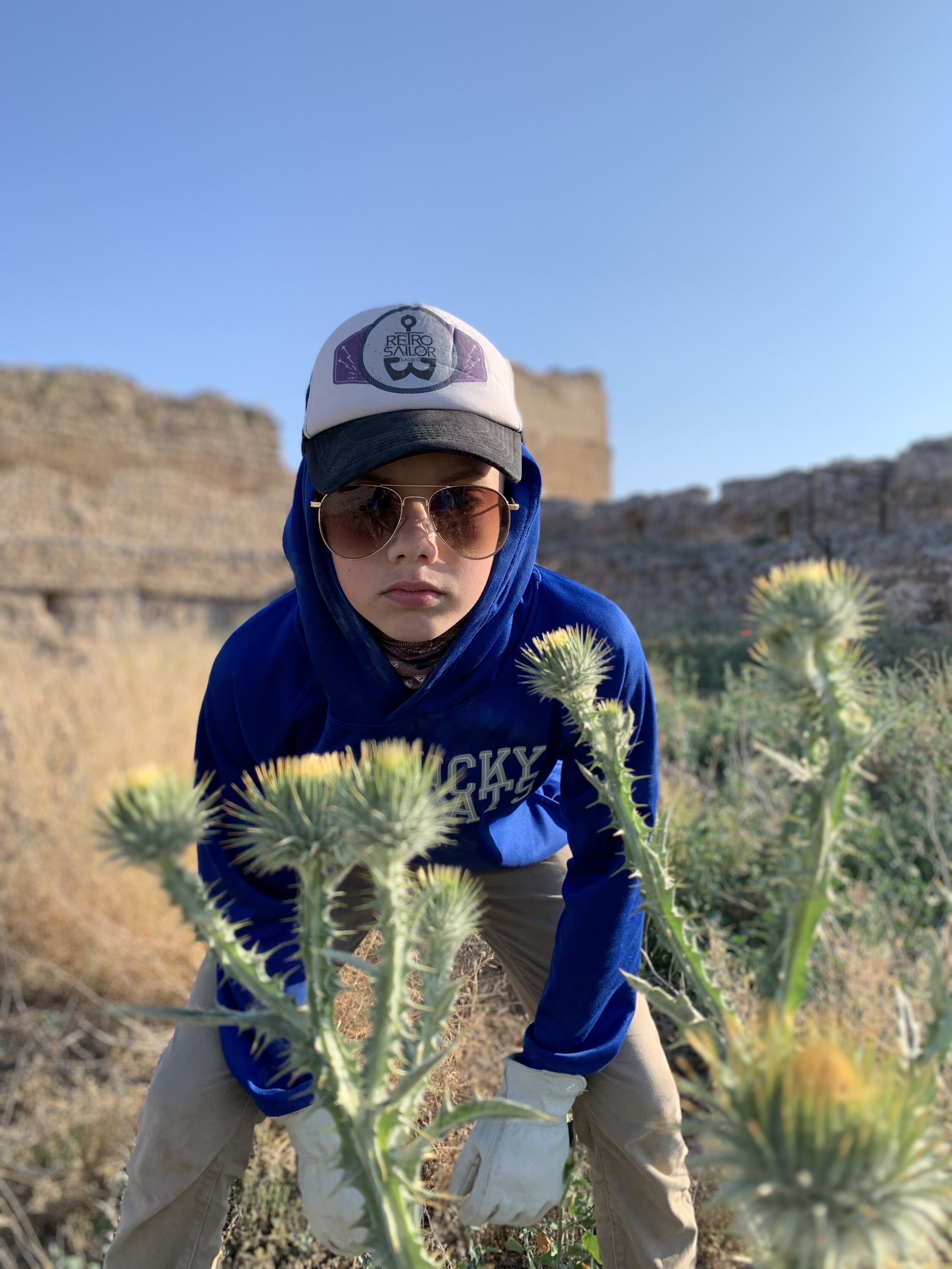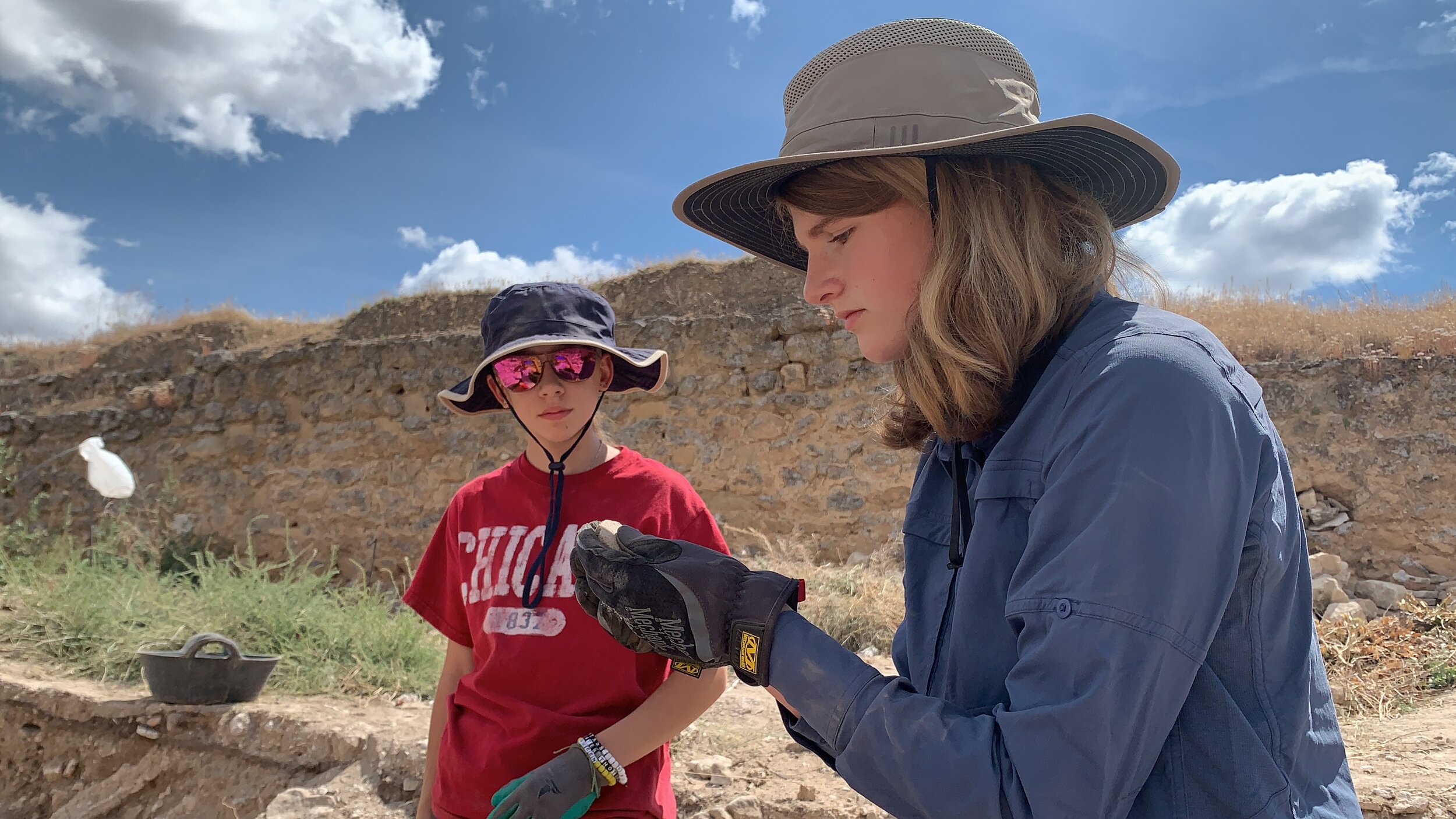

Project Overview
The Castle of Zorita does not appear in many guidebooks. The city of Zorita and its 85 permanent residents is located about 1.5 hours by car to the east of Madrid in the Guadalajara province The village is a collection of rustic houses that sits at the foot of a plateau, crowned by the castle. The views are endless plains and hills littered with wheat fields and olive groves.
The castle, said to have never been conquered by force, was built in the beginning of the 9th century as a Moorish fortress for Mohammed I of the Omayyad Dynasty of Cordoba. According to the Persian physician and writer Al-Razi, the Moors used the stones from the nearby abandoned Visigothic city of Rec opolis to construct the walls. A document from 926 says the castle was a strategic site during a revolt against the caliph Abderraman III. In 1085, the castle was handed over to Alfonso VI, king of Castilla, Leon, and Galicia, by the ruler of Cordoba as part of a dowry to marry Princess Zaida (then age 12).
It passed to the Almoravid Dynasty (a Berber clan from Marrakesh) in the 11th century, but Alfonso VII reclaimed the castle as part of a treaty in 1124.
In 1174, the castle was given to the Order of Calatrava, whose leader, Martin Perez de Siones, transformed it into a proper war machine, full of soldiers, knights, and weaponry. The Order was founded only 17 years earlier by a group of Cistercian monks who took up arms to defend the original Calatrava Castle from the Moors (something the Templars failed to do). Zorita became the Order’s headquarters from the end of the 12th to the beginning of the 13th centuries.
The Duke of Pastrana acquired the castle in 1565 and renovated it to move in his family. It would be past down to subsequent generations of nobles until the 19th century. In 1994, the last owner of the castle, unable to pay for the necessary restoration work to keep the castle standing, sold it to the Zorita town hall for less than a penny.
History
AFAR was the first team to embark on a proper archaeological survey and study of the castle. Aside from renovations and reconstructions prior to the 19th century, the town of Zorita has worked to preserve the site through the restoration of an archway in 1973 and the expenditure of $1 million on an emergency project to reinforce falling walls, and restore the gateway arches and chapel.
Archaeological Focus
In 2022, the investigations in the castle will focus on two areas. The first one, called area 7, is located East of the big room covering the cistern. During 2017 summer campaign, the team discovered two of the walls enclosing this area and did a great job exposing the fallen walls and the decorative plaster covering this room from the final moments of the castle’s life some 700 years ago. Now that the hardest work has been done, we will remove all the remaining big pieces of plaster and continue searching for the beautiful decorations while we push to excavate to the floor level. Sealed by the fallen walls for centuries, we will uncover everything the last inhabitants of the castle left behind.
The second area (6), is located between the castle entrance and the cistern. In 2015, during some restoration work, a small crack opened close to the cistern. We eagerly anticipated the next summer when we could make a test trench to investigate the area. We were hoping to find a staircase giving access to an underground chamber. Instead, we found a square opening, probably built to give light and air to two hallways and a big round bolted chamber. Last summer we could finally get into the new chamber and the hallways. In 2018 we expect to find additional rooms carved into the castle rock at the end of one of the hallways.
Registration
Application & Reservation
To reserve a space, students must submit an application. Upon acceptance into the program, one half of the program fees will be required to be paid. The remainder of the fees will be due by May 1. Application fees will not be refunded if the applicant is not selected.
Applications will be accepted until all spaces are filled. Participants will be notified of their acceptance within two weeks of the submission of their application and will receive an information packet shortly thereafter with further details.
Cancellation and Refund Policy
Before May 1: All payments are refundable.
After May 1: All payments are non-refundable unless your application is rejected by the program director.
Right of Refusal
AFAR reserves the right to refuse an applicant’s selection. This is a rare occurrence and is most likely due to a person’s inability to meet health requirements or in the interest of group compatibility. Once in the field, the program directors and AFAR reserve the right to send a student away from the program should that person’s behavior compromise the safety, research objectives and general performance of the group, or violate Greek laws, regulations or customs.
Expectations of Students
Working on an archaeological site is hard work. Students need to be in good health and capable of using picks, shovels, trowels, and detailed instruments to excavate in a hot environment. Students are expected to conduct themselves in a professional manner, be eager to learn, and capable of taking direction.
Itinerary
Program Itinerary
Day 1 — Arrive in Madrid (morning) and transport to Zorita Castle for tour and program overview
Day 2 — Day 1 of excavations. Evening Workshop: How to Keep a Field Journal
Day 3 — Day 2 of excavations. Evening Workshop: First Notions on Stratigraphy
Day 4 — Day 3 of Excavations. Hike to Visigothic city of Recopolis for site and museum tour
Day 5 — Day 4 of Excavations. Wash pottery in the afternoon.
Day 6 — Day 5 of Excavations. Travel to Candeleda following lunch for weekend.
Day 7 — TBD
Day 8 — TBD
Day 9 — Day 6 of Excavations. Evening Workshop: History of Zorita Castle and notebook sharing
Day 10 — Day 7 of Excavations. Evening Workshop: Drawings and Sketches
Day 11 — Day 8 of Excavations. Tour Zorita cellar in the evening.
Day 12 — Day 9 of Excavations. Kayaking on the River in the afternoon.
Day 13 — Day 10 of Excavations. Evening field note presentations and ceramics recap.
Day 14 — Day Trip to Toledo. Visit Templar and Catapult Museums and Zipline. Farewell dinner at Zorita.
Day 15 - Travel Home.
Students will visit Toledo, Pastrana, Recopolis, Guadalajara, and Albalate de Zorita as excursions. Adjustments to the schedule may be made as circumstances warrant.
Daily Work Schedule
6:00 — Rise and eat breakfast
6:30 — Arrive at castle and begin excavations at the direction of the archaeologists
10:00 — 30 Minute break for snack
12:30 — Wrap up excavations for the day, free time to swim in the river or relax before lunch
2:00 — Lunch
3:00-5:00 — Complete daily documentation, gather artifacts & equipment and depart site.
6:00 — Afternoon programming (varies)
8:00 — Dinner with free time afterwards
10:30 — Bedtime
Accommodations & Meals
The group will be staying at the Posada de Zorita, a 5- minute walk from the excavation site. The posada is a small, rustic inn in the center of the medieval village Zorita de los Canes. Students will be sharing rooms, each with en- suite bathrooms and air conditioning. We can use the hotel's laundry machine. Towels are provided. The hotel includes a general room with a television and a dining area where meals will be served. Wifi is also available.
Posada de Zorita de los Canes
Calle del Castillo, 2, 19119
Zorita de los Canes
Guadalajara
Spain
Meals will be eaten at the hotel, and an arrangement will be made to provide us with a mid- workday snack. Lunch in Spain is the main meal, with breakfast and dinner being lighter. Please let us know if you are a vegetarian or if you require a special diet so that we may discuss the best way to accommodate your needs.
Workshops & Excursions
Most afternoons the program directors will conduct classroom sessions concerning the fieldwork and the history of the Castle.
Topics include:
History of Spain
Introduction into Archaeology including Stratigraphy, Artifact Collection and Archaeological Recording
History of the Castle and Castle Architecture
Keeping an Archaeological Journal
Pottery Drawing
Historical Excursions
An archaeologist’s work is not finished unless he or she can sit back and reflect on the day’s excavation. Therefore, the group will make time to experience Spain away from the shovels and wheelbarrows, either by relaxing at a café or by visiting several nearby Roman and Medieval sites.
We believe that visiting the region’s historical sites is essential to understanding the context of the archaeological work at Zorita. Excursion locations may be adjusted due to the excavation schedule and unforeseen events. Probable excursions include the following:
The Roman city of Segóbriga: Theater and Amphitheater
City of Toledo: Cristo de la Luz Mosque, Hercules' Caves, Alcázar, Arab Baths, Sephardic Museum and Jewish Quarter, Transit and Santa Maria la Blanca Synagogues
Renaissance town of Pastrana: Palatial prison of one-eyed Princess of Eboli
Actual excursions may change based upon unforeseen circumstances or additional opportunities.






















Spain Team Leaders
In addition to the Spanish Archaeology Team that will oversee the excavations, there will be numerous staff members supporting the archaeological team.







